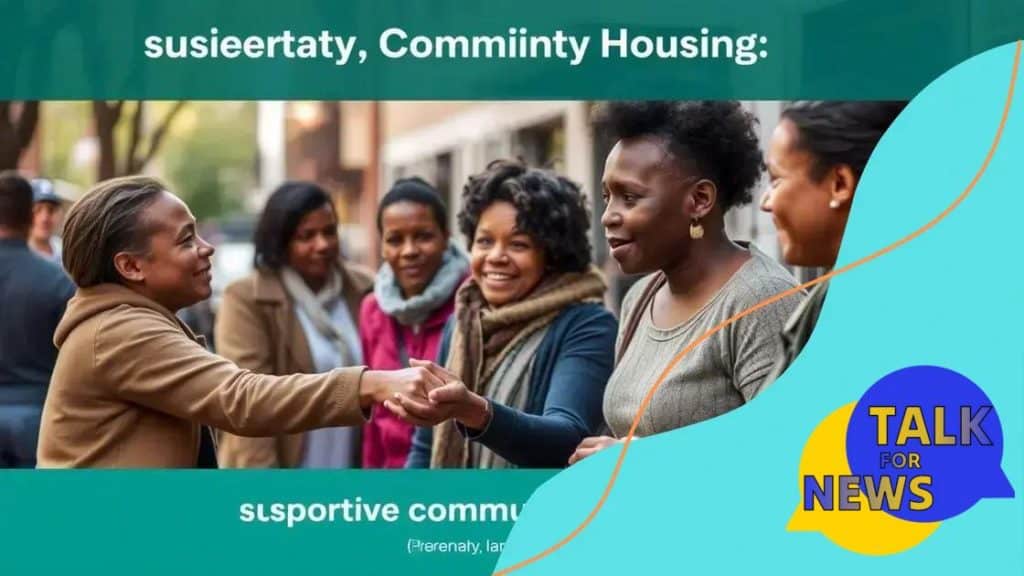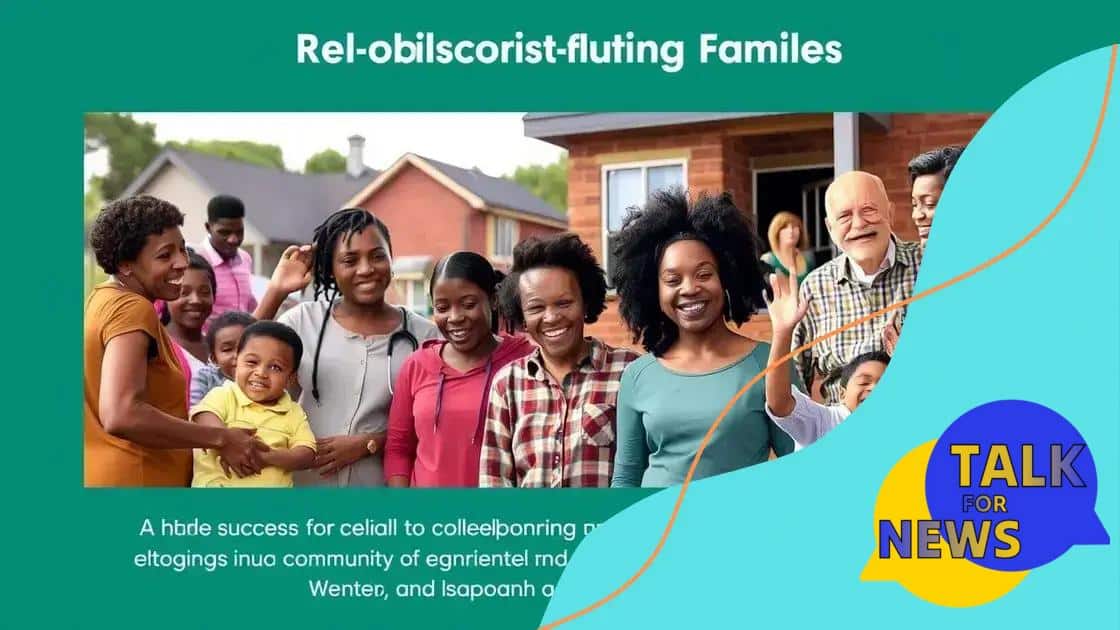How new federal housing assistance programs are addressing homelessness

Anúncios
New federal housing assistance programs directly address homelessness by providing affordable housing options, financial support, and essential services, aiming to foster stability and reduce the number of individuals experiencing homelessness.
How new federal housing assistance programs are addressing homelessness is a critical question as communities seek solutions. Have you noticed the increased discussions around housing support recently? Let’s dive into how these initiatives are trying to make a real difference.
Anúncios
Overview of federal housing assistance programs
Understanding the overview of federal housing assistance programs is essential in tackling homelessness effectively. These programs are designed to provide support to individuals and families facing housing instability. The goal is to offer resources that foster long-term stability and self-sufficiency.
Types of Housing Assistance Programs
There are several types of federal housing assistance programs available. Each aims to meet different needs of the population:
- Public Housing: These are government-owned properties that provide affordable living options to low-income families.
- Section 8 Housing Choice Voucher Program: This program allows participants to rent homes in the private market with financial assistance.
- Project-Based Rental Assistance: Funded by the federal government, this program is attached to specific buildings that offer affordable housing.
- Continuum of Care: This program focuses on providing services for those experiencing homelessness and helps them find permanent housing.
Anúncios
Each program has unique benefits that cater to various housing needs. Public housing, for instance, allows tenants to pay rent based on their income, ensuring affordability. Meanwhile, Section 8 provides flexibility in housing choice.
Eligibility Criteria
Eligibility for these programs often depends on income level, family size, and housing needs. Understanding these criteria can help potential applicants determine their options. It’s crucial to note that many programs prioritize vulnerable populations, such as the elderly and disabled individuals.
Applying for assistance can be a complex process, but numerous resources are available to guide applicants through it. From local housing authorities to nonprofit organizations, support systems are in place to help navigate these programs.
Key features of new housing programs
Exploring the key features of new housing programs is vital for understanding how these initiatives help individuals and families. These programs are structured to provide significant benefits that address various aspects of housing insecurity.
Affordability
One of the standout characteristics of these programs is their emphasis on affordability. Many new housing initiatives aim to ensure that rent is capped based on income. This means that families can spend a reasonable portion of their earnings on housing, reducing financial stress.
- Sliding scale rents: Rent payments adjust according to income changes.
- Subsidized housing: Programs work to provide financial assistance that lowers rent benefits.
- Fixed benefits: Many programs offer a fixed rental rate regardless of market changes.
Comprehensive Support Services
Beyond housing, these programs often include access to a variety of support services. These might range from job training to health services. The idea is to provide an integrated approach to help individuals regain stability in their lives.
Community-building activities are also a common feature, encouraging residents to connect and support one another. These interactions can foster stronger communities, making the housing programs even more effective.
Flexibility and Accessibility
New housing programs prioritize flexibility. This means offering options that cater to diverse family structures and living situations. Rather than a one-size-fits-all approach, these initiatives recognize individual needs.
Accessibility is also a key factor in the success of these programs. They often strive to reach marginalized populations who might not traditionally have access to governmental support. By simplifying the application process and reducing bureaucratic hurdles, these programs become more effective in reaching those in need.
Success stories from different regions

Exploring success stories from different regions highlights the impact of federal housing assistance programs across the United States. These stories provide real-life examples of how supportive housing initiatives transform lives.
Urban Success
In urban areas, such as New York City, programs like Housing First have led to significant improvements for individuals experiencing homelessness. By offering immediate housing without preconditions, many have moved off the streets and into stable living situations.
- Access to health services improved, reducing emergency room visits.
- Increased employment opportunities for formerly homeless individuals.
- A reduction in overall homelessness rates in these communities.
Rural Transformations
Success stories also emerge from rural areas. In states like Montana, innovative housing programs have addressed unique challenges. These programs cater to specific needs, such as offering assistance to seasonal workers and low-income families.
Through partnerships with local organizations, these initiatives have provided essential resources. By establishing supportive housing structures, communities see residents thriving rather than merely surviving.
Community Engagement in the South
In southern regions, community engagement plays a vital role. Programs in cities like Atlanta focus on involving residents in the development of housing programs. This participatory approach allows communities to have a voice, which leads to tailored solutions that meet local needs.
These success stories illustrate the powerful effects of federal housing programs when they are adapted to fit the specific cultural and economic contexts of the regions.
Challenges in implementing these programs
Examining the challenges in implementing these programs reveals the complexity behind promoting housing assistance. While these initiatives aim to reduce homelessness, various obstacles can hinder their effectiveness.
Funding Limitations
One significant challenge is securing sufficient funding. Many programs rely on federal and state budgets, which can fluctuate. This instability can lead to partial or complete cuts in critical housing initiatives.
- Competitive grant processes: Limited resources mean that organizations must compete for funding.
- Economic downturns: Budget cuts during tough economic times impact housing assistance.
- Long-term sustainability: Many programs struggle to maintain operations without consistent financial backing.
Bureaucratic Red Tape
Bureaucratic processes often slow down the rollout of housing programs. Applicants may encounter complex paperwork or lengthy approval times. This can frustrate those in need and deter them from applying for assistance.
Reducing these barriers is crucial. Streamlining application processes can help ensure that aid reaches those who need it most swiftly.
Public Perception and Stigma
Another challenge lies in public perception. Some communities may resist housing assistance initiatives, fearing they could attract crime or reduce property values. Overcoming stigma is vital to garner support for these programs.
Education and outreach efforts can play a significant role in changing attitudes. By sharing success stories and emphasizing the positive outcomes of these initiatives, communities can begin to see the benefits of supporting them.
Future outlook on addressing homelessness
Considering the future outlook on addressing homelessness, it’s crucial to understand the evolving dynamics of housing assistance programs. With various innovations and strategies being developed, communities can remain hopeful about significant improvements.
Integrated Approaches
Future strategies are likely to focus on integrated approaches. This means combining housing with services like mental health support, job training, and healthcare. Such partnerships can help individuals gain stability.
- Wraparound services: Providing multiple support services in one place enhances accessibility.
- Community collaboration: Engaging local organizations fosters a team approach to solutions.
- Prevention initiatives: Addressing issues before they escalate can reduce homelessness rates.
Policy Innovations
New policy innovations will be essential in focusing on affordable housing solutions. Policymakers are exploring various models to incentivize the construction of affordable homes. By encouraging developers to create low-cost housing, municipalities can help alleviate housing shortages.
Additionally, legislation that protects tenant rights will grow more vital, ensuring that people do not lose their homes due to sudden rent increases.
Public Awareness and Advocacy
As public awareness grows, communities are becoming more willing to support housing initiatives. Advocacy groups play a significant role in educating the public about homelessness. Their efforts can lead to a shift in attitudes and contribute to more inclusive policies.
Increased funding for housing programs from both federal and state levels is expected, as awareness of housing insecurity becomes more mainstream.
Looking forward, the combination of innovative policies, community engagement, and an integrated approach can create a comprehensive strategy to effectively address homelessness.
The conclusion of the content emphasizes the importance of enhanced collaboration between various sectors, including government, community organizations, and advocates for the homeless. By working together, these groups can create effective housing assistance programs that address immediate needs while promoting long-term solutions. Investment in innovative strategies and increased public awareness are essential for a brighter future. With ongoing efforts, there is hope for significant progress in reducing homelessness.
FAQ – Frequently Asked Questions about Federal Housing Assistance Programs
What are federal housing assistance programs?
Federal housing assistance programs aim to provide support and resources for low-income individuals and families struggling with housing insecurity.
How do these programs help reduce homelessness?
These programs offer affordable housing options, financial assistance, and access to support services that help individuals regain stability and prevent homelessness.
What challenges do these programs face?
Challenges include funding limitations, bureaucratic hurdles, public perception, and the need for coordinated efforts among various stakeholders.
What is the future outlook for addressing homelessness?
The future focuses on integrated solutions that combine housing with support services, increased public awareness, and innovative policies to effectively address homelessness.





